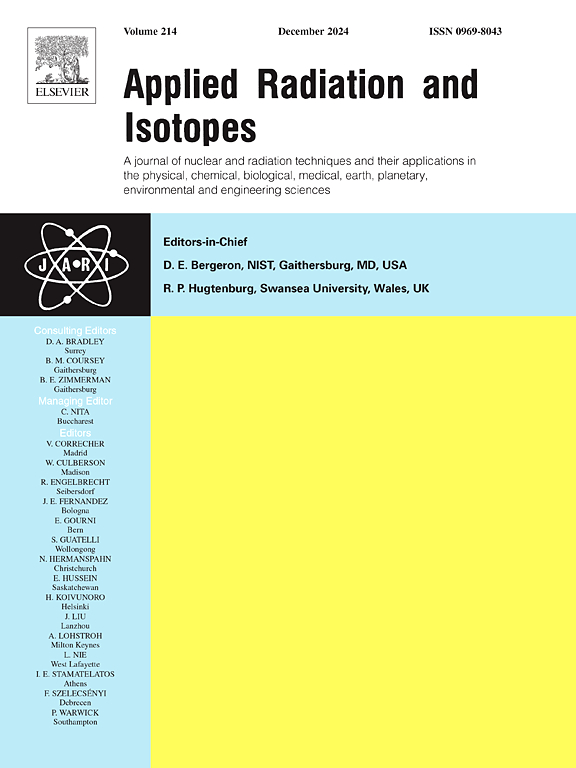Simulation of diffusion and decay of radon/thoron exhaled from a wall and its newly created progeny. Response of a bare LR-115 detector placed on the wall
IF 1.6
3区 工程技术
Q3 CHEMISTRY, INORGANIC & NUCLEAR
引用次数: 0
Abstract
Monte Carlo techniques were used to simulate the air diffusion of exhaled radon/thoron atoms from a wall, the formation and decay of different radioactive species during transport, and the response of a bare LR-115 detector placed on the exhaling surface. The spatial distributions of radionuclide decays and the detector's partial sensitivities to radon/thoron and their progeny were determined. The simulation results were numerically validated through comparisons with published theoretical and experimental data. From the simulated experiments, the contributions of different species to the total track density and what the detector might measure in the studied configuration and assumed parameters were inferred. It was shown that near the wall, where the effective volumes of all species are located, the number of radon atoms was approximately constant, while that of thoron decreased to about 30% relative to the number of exhaled atoms, and the equilibrium factors of both gases were very low. A negligible contribution of 220Rn and 216Po to the track density is expected if the distance between detector's edges and support exceeds 5–6 times the thoron characteristic diffusion length. For similar detector and support sizes, these atoms can significantly contribute to the track density if thoron exhalation rate from wall is high. The advantages and limitations of the detector exposure method for estimating indoor radon concentrations are analyzed. Finally, a simple method is suggested for more accurate radon measurements using the bare LR-115 detector placed on a wall.
求助全文
约1分钟内获得全文
求助全文
来源期刊

Applied Radiation and Isotopes
工程技术-核科学技术
CiteScore
3.00
自引率
12.50%
发文量
406
审稿时长
13.5 months
期刊介绍:
Applied Radiation and Isotopes provides a high quality medium for the publication of substantial, original and scientific and technological papers on the development and peaceful application of nuclear, radiation and radionuclide techniques in chemistry, physics, biochemistry, biology, medicine, security, engineering and in the earth, planetary and environmental sciences, all including dosimetry. Nuclear techniques are defined in the broadest sense and both experimental and theoretical papers are welcome. They include the development and use of α- and β-particles, X-rays and γ-rays, neutrons and other nuclear particles and radiations from all sources, including radionuclides, synchrotron sources, cyclotrons and reactors and from the natural environment.
The journal aims to publish papers with significance to an international audience, containing substantial novelty and scientific impact. The Editors reserve the rights to reject, with or without external review, papers that do not meet these criteria.
Papers dealing with radiation processing, i.e., where radiation is used to bring about a biological, chemical or physical change in a material, should be directed to our sister journal Radiation Physics and Chemistry.
 求助内容:
求助内容: 应助结果提醒方式:
应助结果提醒方式:


